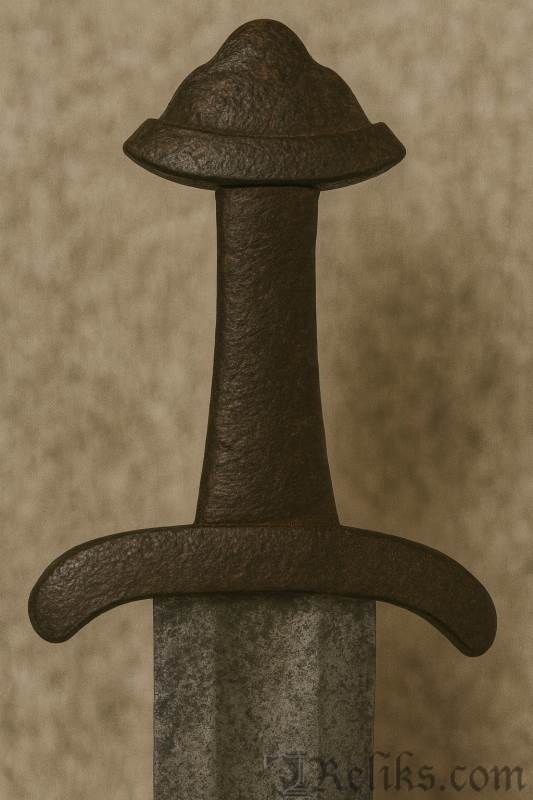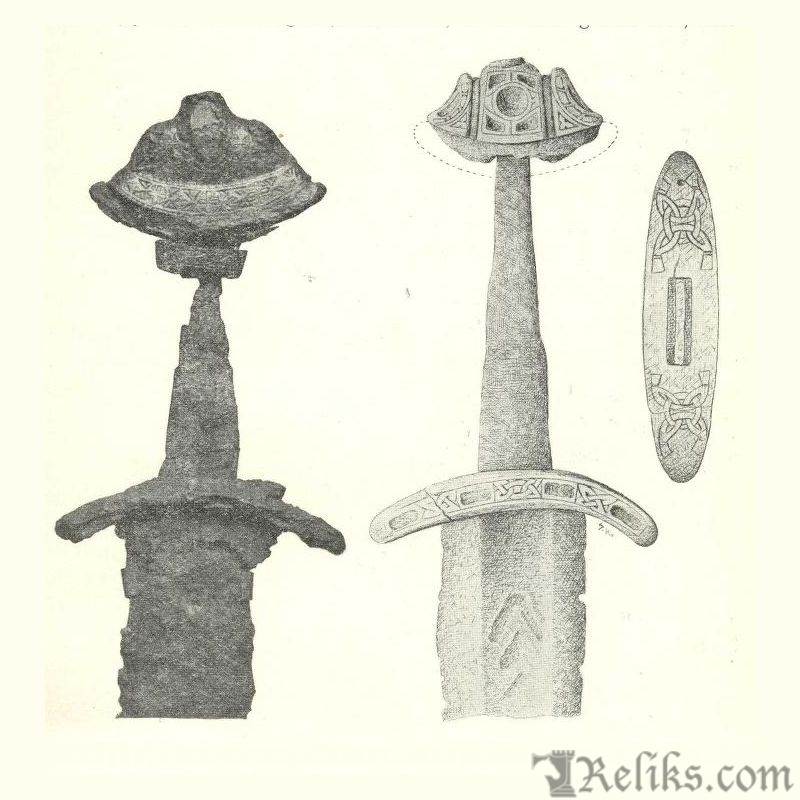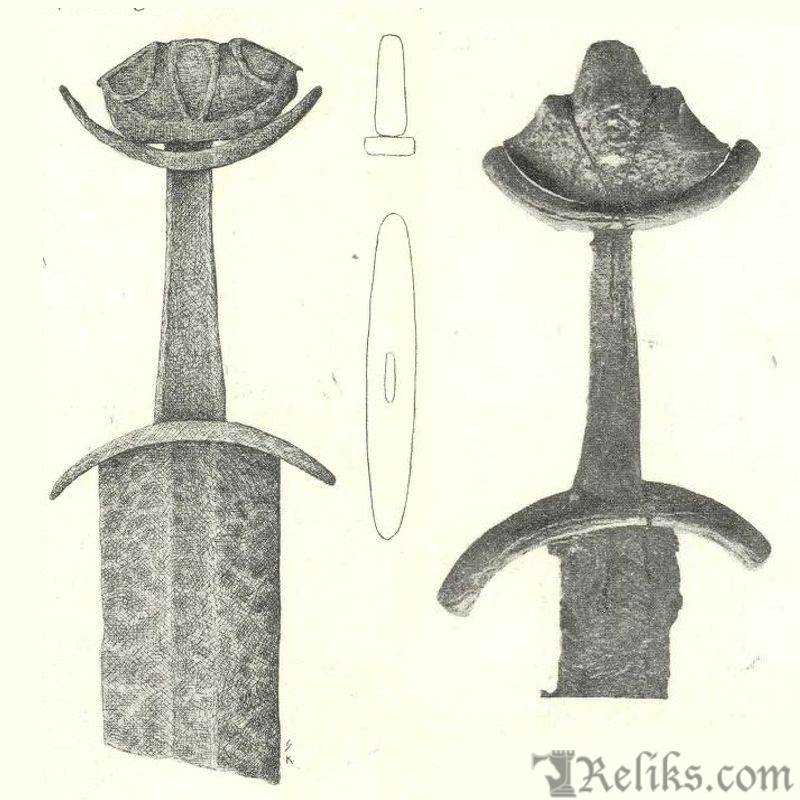Viking Sword Type L – The Curved-Guard Prestige Hilts
Distinctive Elegance in Metalwork
Among the many swords of the Viking Age, Type L is one of the most immediately recognizable. Its hilts curve dramatically upward and downward, more so than any other type in Petersen’s typology. With their tall triangular pommels, sweeping guards, and lavish silver decoration, these weapons carried a presence that was both martial and aristocratic. They stand at the crossroads of Scandinavian tradition and the Anglo-Saxon and Insular artistry of the late 9th century.
Archaeological Description

Viking Sword Type L – Curved Guards and Anglo-Saxon Silverwork
The defining feature of Type L swords is the curvature of the guards. Both the upper and lower guards sweep in long arcs, enclosing a relatively short grip—often less than 8 cm—which makes the hilt appear compact between its wide, arching arms. The cross-sections are low and flat, with rounded ends that soften the silhouette.
The pommel retains the familiar three-part construction, but here the central lobe rises high, sometimes to 4.5 cm, and often comes to a subtle point. The side lobes curve inward, echoing the older “animal-head” tradition from earlier Viking swords.
Decoration is generous. Guards and pommels were plated with silver, their surfaces engraved with geometric or vegetal designs, and often filled with black niello for contrast. Some swords carry thin metal bands—vettrim—wrapped around the grip or outlining the join between pommel and guard. These embellishments gave the sword a shimmering presence when new, catching light with both polish and pattern.
The blades themselves are all double-edged. A number are pattern-welded, though unlike H- or K-types, no inscriptions are securely known on surviving Type L examples.
Relationships to Other Types

Petersen Sketches (fig.94-95)
Type L grows out of the older three-lobed pommel tradition seen in Types D and E, but takes a bold step forward with its dramatically curved guards. Its ornament and compact proportions place it alongside contemporary Anglo-Saxon hilts, especially those decorated in the Trewhiddle style. Petersen even noted that some Norwegian imitations stripped away the silver and worked only in iron, producing plain but recognizable “folk” versions of the elite imported type.
Historical & Cultural Context
The late 9th century was a time of intense contact between Scandinavia and the British Isles. Viking fleets were raiding, trading, and settling in England, Ireland, and Scotland, bringing back not only wealth but also artistic ideas. The Insular influence is clear on Type L hilts, where the silver and niello ornament mirrors Anglo-Saxon designs.
In Norway, especially along the southeast coast in Vestfold, such swords would have marked out their owners as men of wealth and wide connections. They were prestige objects—symbols of power as much as weapons of war. The simpler local copies show that the design was admired and imitated even by those who could not afford the full silver-plated version.
Distribution and Finds
Petersen identified around 14 clear examples of Type L. A strong cluster comes from Vestfold—sites like V. Dolven, Nes Hedrum, Grenneberg Tjølling, and Nedre Store-Var Stokke. Others appear in western Norway (Sæve at Voss, Årberg in Indre Holmedal, Evebø in Gloppen), Trøndelag and Romsdal (Hovin in Sundalen, Bjerkan in Stjørdalen, Sundnes in Inderøy), and Kopervik in the Stavanger area.
Notable finds include the richly inlaid hilt from Hovin Sundalen, with silver designs firmly in the Trewhiddle tradition. Outside Norway, Type L swords are known from Uppland in Sweden, Denmark (Nationalmuseet #2235), and even the British Museum, where several examples are thought to be of English manufacture.
Dating

Petersen Sketches (fig.96-97)
The curved-guard swords appear in the later 9th century, especially after about 870. Some combinations with I-type spears and later axe forms show that they continued in use into the early 10th century, straddling the transition around the year 900. Associated finds include F- and I-type spearheads, E-type axes, and younger rattles—all markers of this younger horizon in Viking weaponry.
For Collectors and Enthusiasts
For modern collectors, historians, and reenactors, Type L swords are among the most elegant of all Viking hilts. Their flowing guards and tall pommels give them a profile unlike any other, while the silver and niello ornament places them squarely in the realm of elite display weapons. Replicas that capture these arcs and inlays can instantly be recognized as “high-status” swords of the Viking Age.
Closing Reflection
Type L represents a meeting point of cultures: the Norse warrior tradition fused with the refined artistry of Anglo-Saxon England. These hilts remind us that Viking swords were not just tools of war but also works of art and symbols of identity. With their sweeping curves and gleaming decoration, they mark one of the most graceful silhouettes in Petersen’s typology—swords that carried both the power of the blade and the prestige of international style.
Core classification based on Jan Petersen, De Norske Vikingesverd (1919). Additional commentary by Reliks.com.